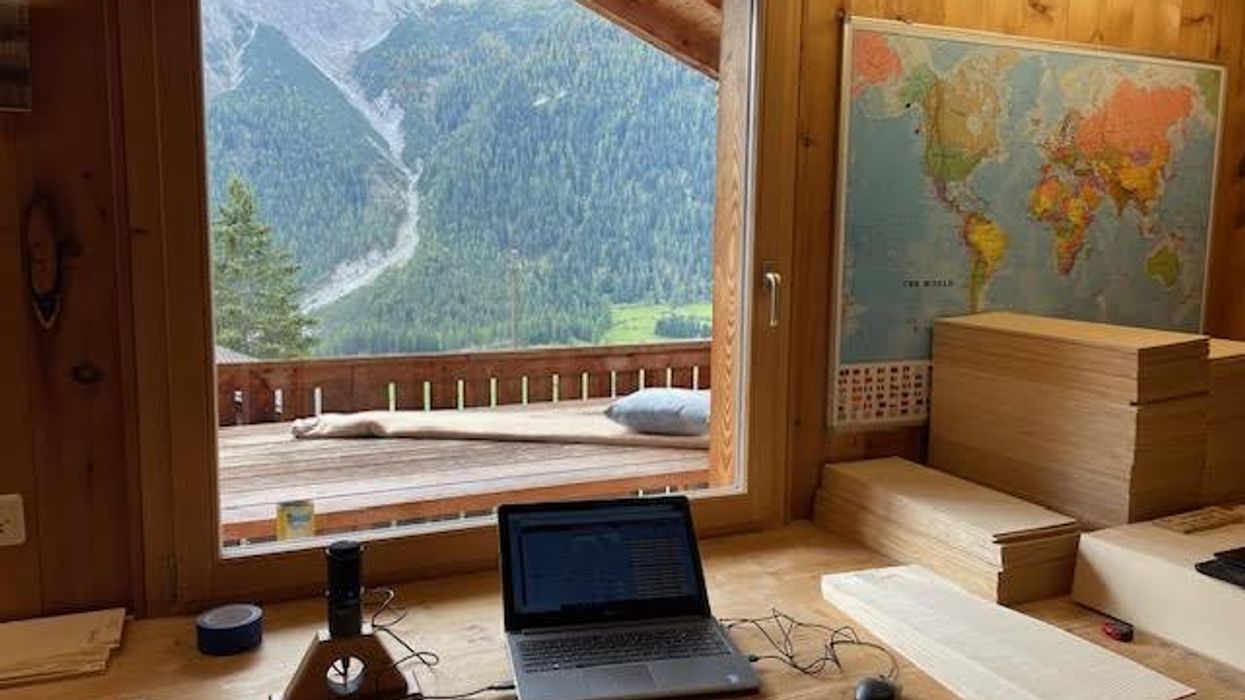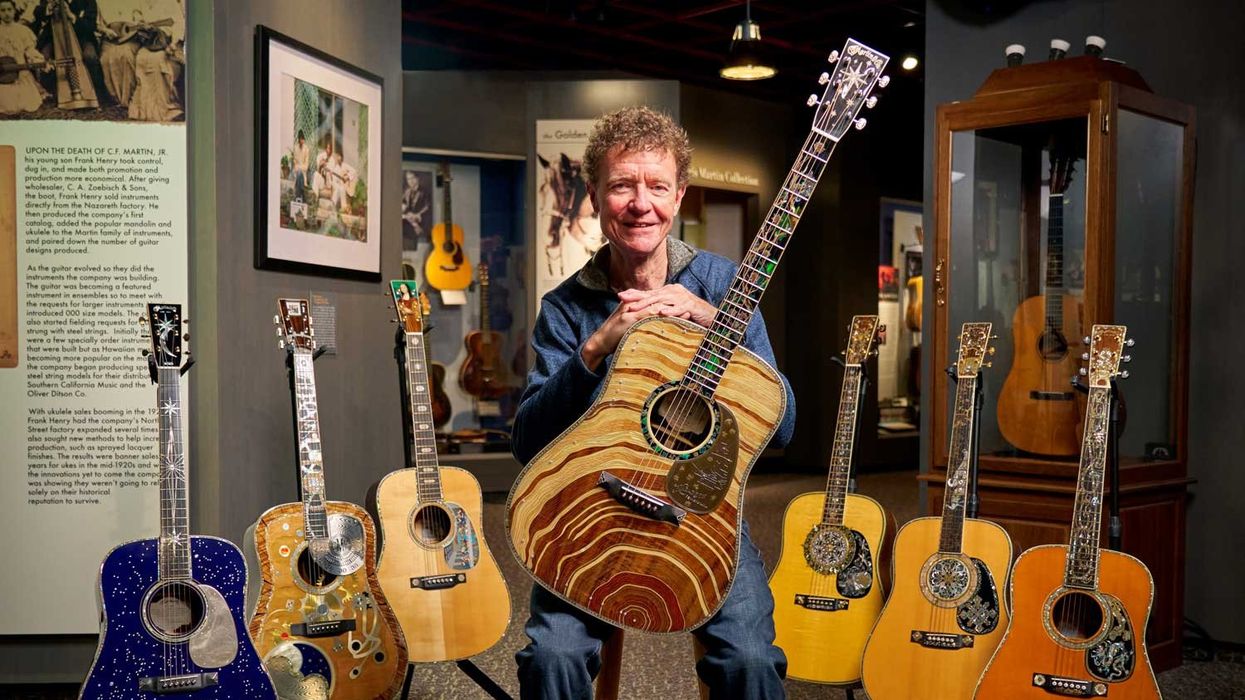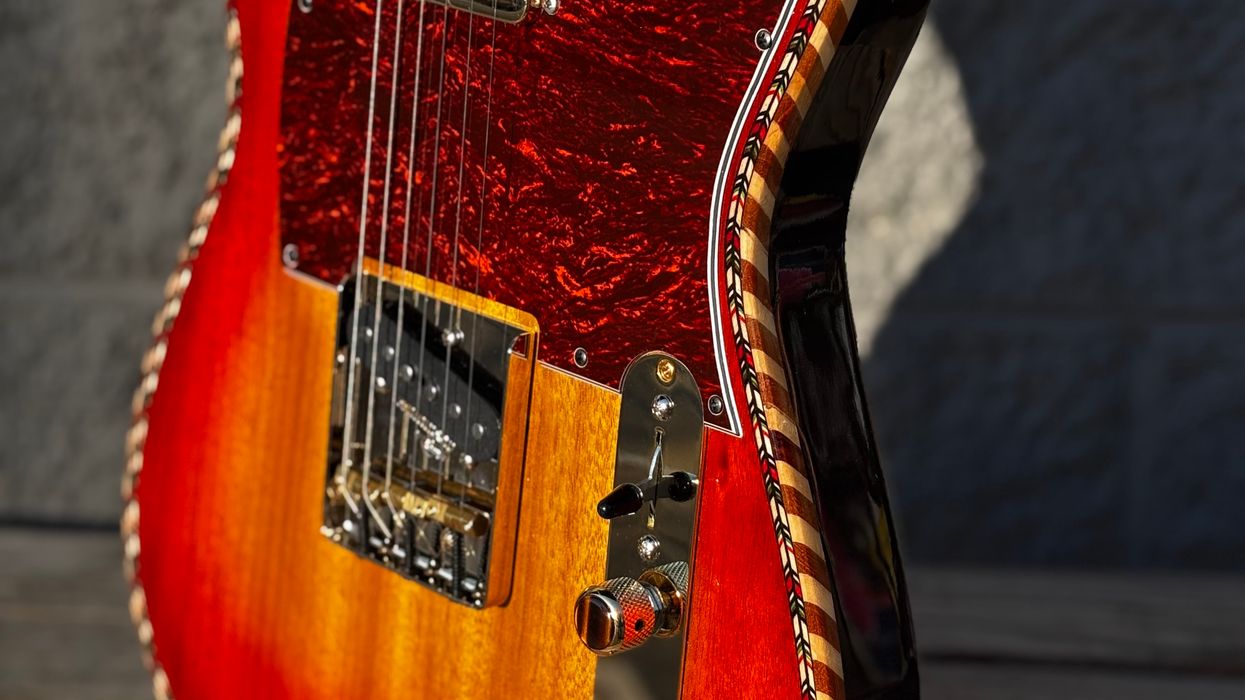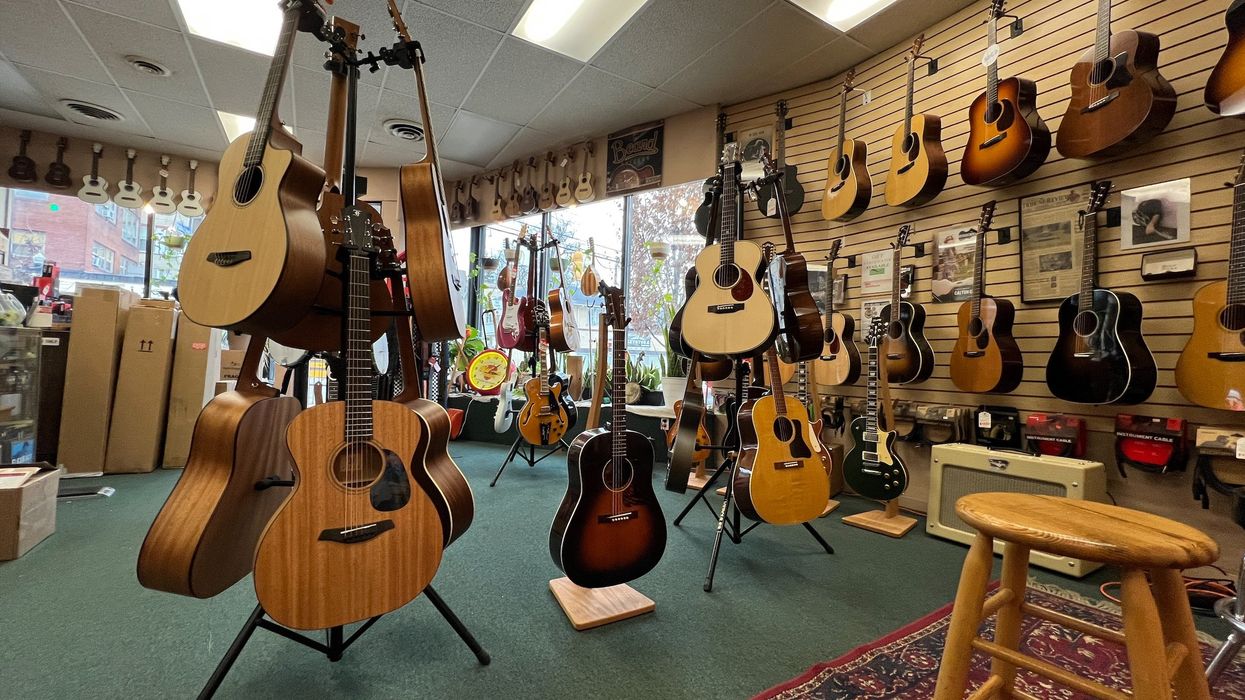Skillful guitar design reflects not only an appreciation for quality materials, but a nuanced understanding of how they behave.
In order to make a great instrument, there are a few basic elements to balance: the materials, the design, and the maker’s ability to execute the design. While there are scenarios where the quality of a material can overcome some limitations of design or workmanship, and vice versa, the best results are found when these three elements are brought into balance with each other.
This formula is pretty easy to imagine. When the materials are selected appropriately for a certain design, and that design is constructed with a corresponding level of care, the outcome will likely be successful. This recipe becomes more complex and dynamic where the boundaries of these categories meet each other. One such example is seen on the back of a solid wood guitar. Commonly, the back will be made of two matched pieces of wood joined in the center, or three pieces with matching seams on either side of the centerline. As with any other visible difference between guitars, this is a natural invitation for a player to ask which is better.
To better answer this, we need to understand a little about wood. Wood is a complex material to work with in that it generally has a different set of characteristics in all three dimensions. While you could weigh a plank of wood and calculate its overall density or a similar characteristic, close examination will reveal unique behaviors along the board’s width, thickness, and length. All three dimensions will have small or big differences in strength and dimensional movement in response to the surrounding environment.
Wood is always moving, absorbing, or losing moisture from the surrounding air as it seeks equilibrium, which results in continuously changing dimensions. While we picture a board having a square or rectangular shape, it’s important to realize it grew as a cylinder. As a result, these three dimensions of wood are not laid out like the X, Y, and Z axis of the graphs we drew in school. They are arranged from the center outward toward the rim like the spokes on a bicycle tire, in concentric circles around the center like the grooves on a record, and, finally, in the direction of roots to leaves. Sawing a board lengthwise from this cylinder will reveal grain lines curving throughout the piece of wood. A second complexity is the practical reality that trees really don’t grow particularly large. Trees may grow tall, but seldom will they achieve the large diameter needed to yield exactly the sort of object a maker desires.
Wood is always moving, absorbing, or losing moisture from the surrounding air as it seeks equilibrium, which results in continuously changing dimensions.
The boards a sawyer cuts the cylindrical log into are rarely large enough to make something wide like the back of a guitar. Even if they were, the result wouldn’t be a good one. Since we know the grain lines of the tree would be curving and shifting directions throughout the expansive width of the back board, and we know there are different characteristics along each axis of the tree, it becomes clear a one-piece back would have a wide variety of strengths and dimensional movement behavior across its width. And this would result in cracks, warping, and poor resonance response. So, this scenario would make it difficult for a maker to build any sort of consistent, stable, and good-sounding instrument. A far better approach is to take a board half the width of a guitar back, split it in two, and join the two halves together. With this approach, both halves should behave as evenly as wood will allow.
If the grain lines are still curving away more than desirable, a maker can take this idea a step further. With tightly curving grain lines seen in trees with a smaller diameter, or near the center of a large tree, a maker could choose to join together a larger number of narrower boards, effectively limiting how much irregularity there is across the entire guitar back. In this case, three or more narrow boards can be assembled to provide increasing evenness in grain direction and stability.
The drawback of this approach is the effort required to build the guitar. If it takes a certain amount of time and work to carefully make one joint, it requires twice as much time to add a second joint, and so on. With very careful joinery work, and appropriate glues, these joints are acoustically invisible. Done poorly, they can overly dampen the character of the wooden back.
When we look at the back of a guitar, whether assembled from two, three, or more pieces, the number of individual boards is largely unimportant in comparison to the quality of workmanship, stability, evenness, and resonance of the whole guitar.











![Rig Rundown: Russian Circles’ Mike Sullivan [2025]](https://www.premierguitar.com/media-library/youtube.jpg?id=62303631&width=1245&height=700&quality=70&coordinates=0%2C0%2C0%2C0)






